|
Solid rubber tire:
rolls smoothly, little vibrations during transport, rolling resistance is less than in case of a pneumatic tire.
|
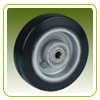
|
|
Thermoplastic elastomer tire:
grey tires that does not mark, great rolling comfort, noiseless, little rolling resistance, resistant to various chemical substances.
|
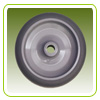
|
|
Solid antistatic rubber tire:
usually grey, does not mark. Appropriate for application in the equipment, in which electric charges need to be dissipated (in hospitals or laboratories). The electrical resistance is from 5.104 to 108 ohms.
|

|
|
Polyurethane tire:
large load capacity, low wear rate, rolls smoothly, resistant to cutting with sharp metal splinters, non-resistant to hot water and steam.
|
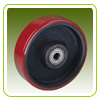
|
|
Vulkollan tire:
Tire with large load capacity, great shape retention even after long-term exposure to extreme loads, abrasion-resistant properties.
|
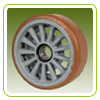
|
|
Pneumatic tire:
Maximum shock absorption, low rolling resistance on rough surfaces.
|
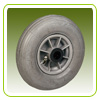
|
|
|
Polyamide and polyproylene wheel:
Impervious to damp as well as to acids, very good mechanical properties, large load capacity, high wear rate, appropriate for smooth surfaces.
|
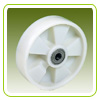
|
|
Phenolic resins:
large load capacity, resistance to the long-term exposure to the temperature of 250°C. Wheels ideal for baker furnaces.
|
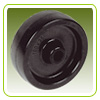
|
|
Cast iron solid wheels:
large load capacity, low wear rate, very high resistance to the exposure to high temperatures, poor shock absorption.
|
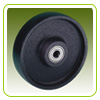
|
|












